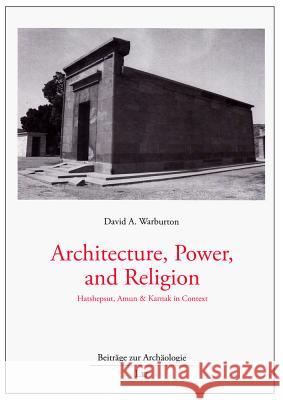Architecture, Power, and Religion : Hatshepsut, Amun & Karnak in Context » książka
Architecture, Power, and Religion : Hatshepsut, Amun & Karnak in Context
ISBN-13: 9783643902351 / Angielski / Twarda / 2012 / 432 str.
This book explores the fundamental question of the origins and nature of monumental religious architecture. The principal argument is that the origins of monumental religious architecture were basically aspatial and that the gradual incorporation of functional space into religious architecture can be related to transformations in religious thought. Although the discussion ranges across the Old World, the argument centers on Egypt and the Egyptian female king Hatshepsut: she set the tone for the New Kingdom by tying her legitimacy to Amun and the monuments she built for him. This leads into the issues of power and political legitimacy, and their relevance to myths. The basic contention is that the political ideologies of the Near Eastern Bronze Age contributed fundamentally to what later became the phenomenon we know as "religion," and that the history of the architecture must be understood in order to understand both religion and architectural space. (Series: Articles on Archaeology / Beitrage zur Archaologie - Vol. 7)











